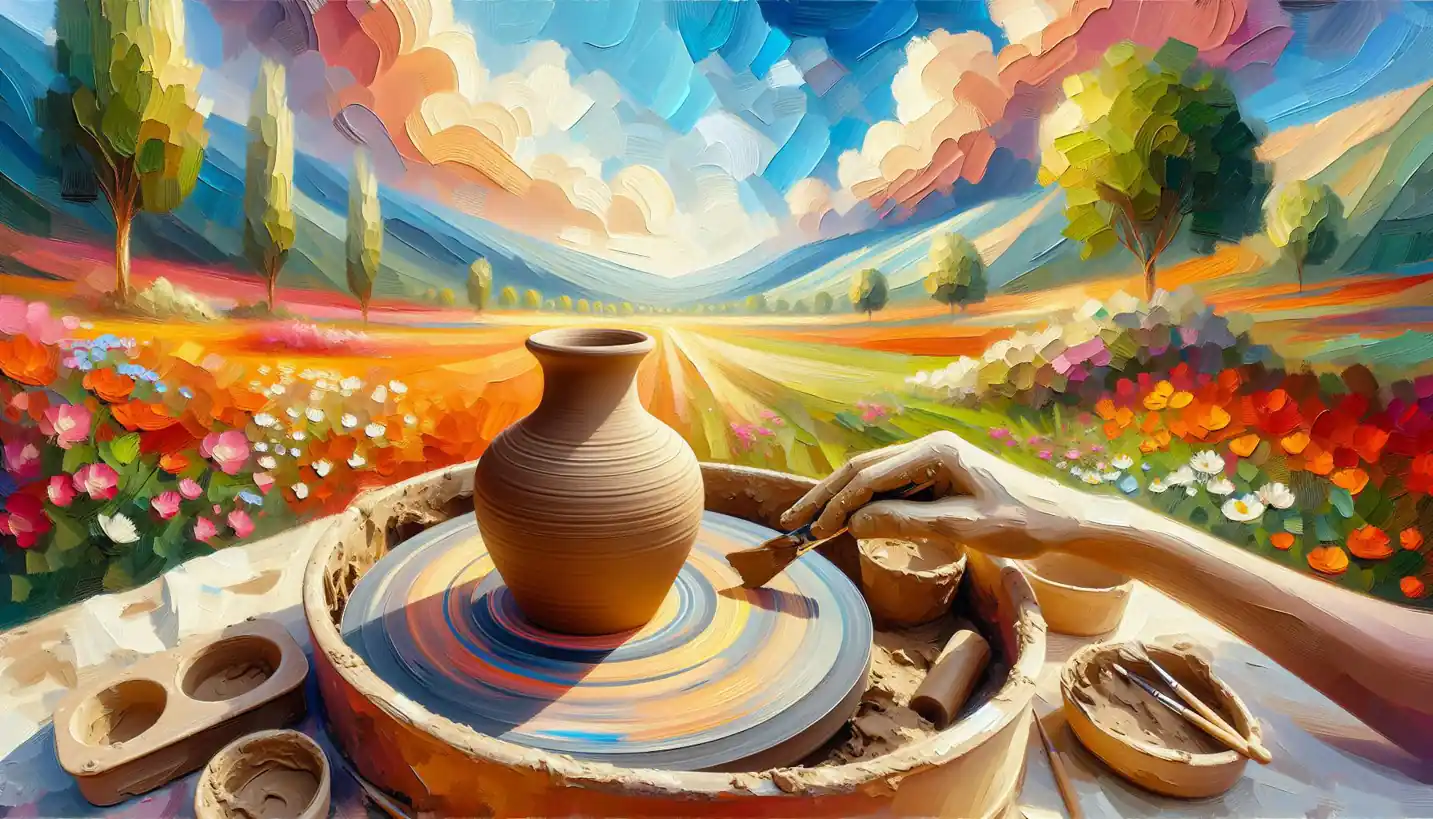· Art · 5 min read
Coiling: A Timeless Art of Ceramics Revealed
Coiling art has stood the test of time in ceramics. Explore how this timeless method weaves clay into stunning handcrafted beauties.

Coiling is one of those ancient techniques that have stood the test of time, much like a classic old song that never goes out of style. This traditional method in ceramics involves shaping clay into beautiful and functional forms without the need for a potter’s wheel. Instead, artists create stunning pottery by stacking and smoothing long, snake-like rolls of clay. Imagine playing with clay as a child, rolling it into little strings – that’s the beginning of what coiling is all about, just on a much more sophisticated level.
The Roots of Coiling
Coiling goes way back in history, like an ancient story passed down through generations. For thousands of years, before potter’s wheels were invented, people used their hands and basic tools to fashion clay into vessels. This method was popular across many cultures, including Native Americans and ancient Chinese civilizations. The simplicity of the technique, combined with the strength and beauty it offered, made it incredibly versatile and widespread.
In many ways, it mirrors the storytelling of those ancient cultures. Each coil added to a pot can be seen as a line in a story, a testament to the time and care invested by the artist. It’s like sculpting the clay with intention and patience, layer by layer.
The Art of Coiling
Getting into the nitty-gritty, coiling is quite simple at its core. You start by rolling the clay into long, thin ropes – think of it like making dough for pasta. Once you have your coils, you begin building your piece by stacking these clay ropes into the desired shape, spiraling upward. The structure is then smoothed out and worked, either by hand or using simple tools, to form the walls of the pot or sculpture.
The beauty in coiling lies in its flexibility. Artists can shape their pieces into virtually any form – from wide, open bowls to narrow-necked vases. It’s like having a blank canvas with limitless possibilities, each coil adding more character to the piece.
Techniques and Styles
There are several styles and techniques within coiling that artists can explore, much like different strokes creating diverse artworks on a canvas. Some prefer to leave the coil lines visible, creating a textured, rustic effect that highlights the method itself. Others smooth the coils entirely, producing a sleek, polished look.
Coiling can be combined with other decorative techniques like slip painting or carving patterns into the surface, adding layers of beauty and complexity. Just like pairing spices to enhance a dish, these techniques intertwine to elevate the final piece.
The Science Behind It
One might wonder what keeps these stacked coils from collapsing. The answer lies in the chemistry of the clay. As the water in the clay starts to evaporate, the particles begin to lock together, creating a strong bond. This natural drying process transforms the initially soft and pliable clay into a solid structure, which is then fired in a kiln. This process hardens the clay permanently, much like baking solidifies dough into bread.
The firing process is the final act in this artistic tradition. The intense heat causes chemical changes within the clay, vitrifying it and making it waterproof and durable. It’s fascinating how something so soft and moldable as clay can transform into a resilient and timeless piece of art.
Why Coiling Still Matters
Coiling has endured for millennia because of its accessibility and the personal touch it allows artists to imprint on their work. In today’s fast-paced world, where mass production is the norm, coiling brings us back to the basics, to a time when craftsmanship and individuality were cherished.
Each piece of coiled pottery is unique, a reflection of the artist’s hands and patience. Unlike pieces churned out by machines, coiled pottery carries with it a story and character that resonates with warmth and authenticity.
People today are seeking out these handmade items more than ever, looking for connection and authenticity in their everyday lives. It’s like choosing a handwritten letter over a printed email – it just feels more personal and meaningful.
Stories from Coiling Artists
Modern ceramic artists often share how coiling helps them connect with their materials and honor the age-old traditions of their craft. Some talk about how the slow, rhythmic process of coiling offers a meditative escape, a way to disconnect from the clamor of modern life. Others use it to delve into cultural expression, exploring their roots through symbolic patterns and forms.
Imagine an artist sitting in their studio, quietly working, coil after coil, building something that is uniquely theirs. It’s a moment of calm creativity, a dialogue between the creator and the clay.
Getting Started with Coiling
For those interested in trying their hand at coiling, it’s a wonderfully accessible technique. All you need is some clay, a few simple tools, and a bit of patience. Entrance into the world of ceramics doesn’t require a lot of fancy equipment, just an open mind and a willingness to experiment and create.
Start small, maybe with a bowl or a simple mug. Feel the satisfaction as the clay bends to your will and takes shape under your fingers. It’s about enjoying the journey as much as the destination.
Coiling into the Future
It’s exciting to think about where coiling will go in the future. As more people rediscover traditional crafts, this ancient technique may find new life in modern contexts. Who knows? We might see coiled pottery taking center stage in contemporary art shows or finding fresh applications in design and architecture.
In a world where technology often takes the lead, coiling remains grounded, reminding us of our creative roots. This age-old art continues to capture our imagination, offering a tangible link to our past and an inspiring canvas for the future.
By keeping coiling alive, both artists and enthusiasts celebrate the tactile joy of working with their hands and the timeless appeal of creating something uniquely beautiful. In its essence, coiling is not just a method of making pottery; it’s a reminder of the beauty and artistry of simplicity.


